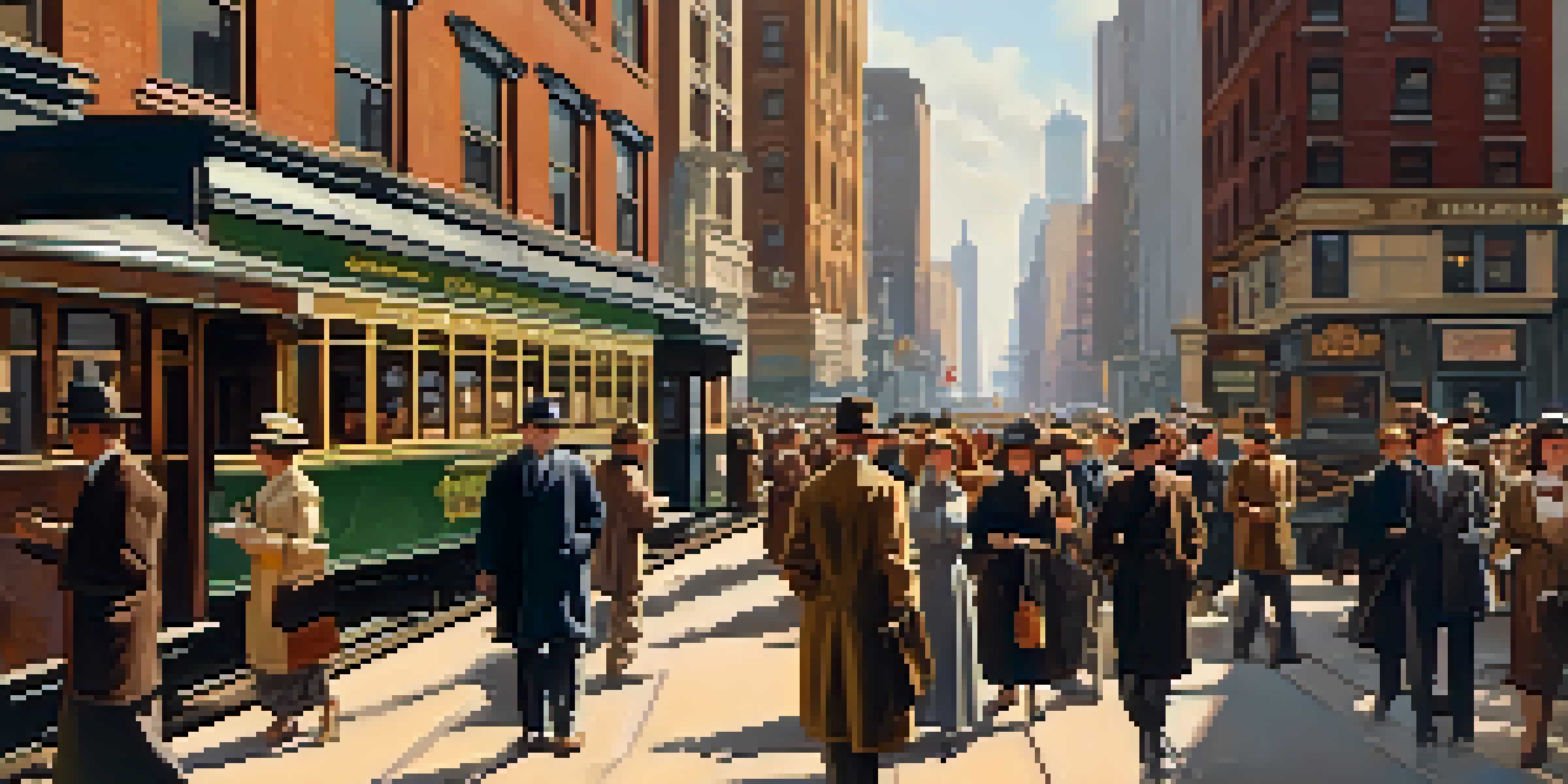Understanding the Chicago School of Poetry: Key Figures

Origins of the Chicago School of Poetry
The Chicago School of Poetry emerged in the early 20th century, rooted in the vibrant cultural scene of Chicago. This movement was characterized by its experimental approach to form and language, standing apart from the traditional poetic conventions of the time. Poets associated with this school sought to reflect the urban experience and the complexities of modern life, using the city of Chicago as a backdrop and inspiration for their works.
Key Characteristics of the Chicago School
One of the defining features of the Chicago School is its focus on free verse and the use of everyday language. This approach allowed poets to break away from rigid structures and explore new themes and styles. Additionally, the Chicago School emphasized the importance of imagery and sensory experiences, drawing readers into the emotional landscape of the poems.
Chicago School's Experimental Nature
The Chicago School of Poetry thrived on experimental approaches to form and language, reflecting the complexities of urban life.
Carl Sandburg: A Pioneering Voice
Carl Sandburg is often regarded as one of the most significant figures of the Chicago School. His poetry celebrated the working class and the American spirit, using vivid imagery to paint a picture of urban life. Sandburg's collection 'Chicago Poems' is a cornerstone of this movement, showcasing his ability to blend realism with lyrical beauty.
Lorine Niedecker and Her Unique Perspective
Lorine Niedecker brought a distinct voice to the Chicago School, often exploring themes of nature and personal experience. Her minimalist style and keen observations reflect her deep connection to the environment. Niedecker's work is a reminder of how the Chicago School encompassed a variety of perspectives, enriching the overall movement.
Influential Poets of the Movement
Key figures like Carl Sandburg, Lorine Niedecker, and Gwendolyn Brooks significantly shaped the Chicago School, each contributing unique perspectives.
Gwendolyn Brooks: A Trailblazer in Poetry
Gwendolyn Brooks emerged as a powerful voice within the Chicago School, breaking barriers as the first African American to win a Pulitzer Prize. Her poetry often addressed issues of race, identity, and community, resonating with readers on multiple levels. Brooks' ability to weave personal narratives into broader social themes made her an essential figure in American literature.
The Role of Community in the Chicago School
Community played a crucial role in shaping the Chicago School of Poetry. Many poets collaborated and supported each other, fostering an environment of creativity and innovation. This sense of camaraderie not only influenced their individual works but also contributed to the collective identity of the movement.
Enduring Legacy of the Movement
The Chicago School's emphasis on free verse and urban themes continues to inspire contemporary poets and movements today.
Influence on Contemporary Poetry
The Chicago School's impact extends far beyond its origins, influencing contemporary poets and movements. Its emphasis on free verse and the exploration of urban themes paved the way for future generations of writers. Today, the legacy of the Chicago School continues to inspire poets who seek to push boundaries and reflect their realities.
Conclusion: The Legacy of the Chicago School
Understanding the Chicago School of Poetry requires acknowledging the diverse voices and themes that emerged from it. Figures like Sandburg, Niedecker, and Brooks each brought their unique perspectives, enriching the poetic landscape. The legacy of the Chicago School remains alive today, reminding us of the power of poetry to capture the human experience.